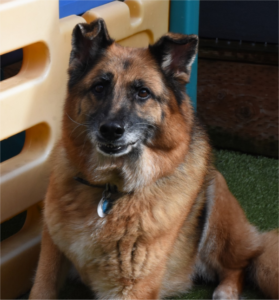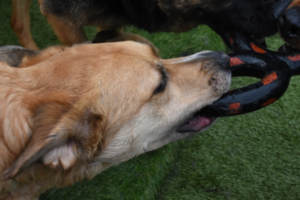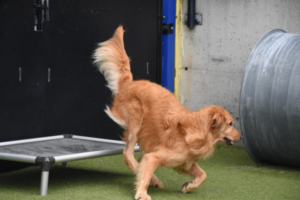Teaching Your Dog Impulse Control
“Training is not a sprint, it’s a marathon.” – Unknown
 Welcoming a new dog, old or young, into your home is undoubtedly a exciting time, but there are also a fair share of challenges…one of which is teaching your dog impulse control.
Welcoming a new dog, old or young, into your home is undoubtedly a exciting time, but there are also a fair share of challenges…one of which is teaching your dog impulse control.
Most dogs are naturally enthusiastic and curious beings, and may struggle with restraint, which leads to behaviors like jumping, excessive barking, and grabbing items they shouldn’t.
Fortunately, with patience, consistency, and positive reinforcement, you can teach impulse control to your new canine friend and create a calmer living environment.
Understanding Impulse Control
Before talking about the training techniques, it’s crucial to understand the concept of impulse control in dogs. Simply put, impulse control refers to a dog’s ability to resist the urge to act on immediate desires. This skill is essential for their well-being and your sanity as a pet owner. By teaching your dog to pause and think before acting, you set the foundation for a well-behaved and happy companion.
You can teach impulse control to your dog…
- Consistent Training Routine – Consistency is the key when it comes to teaching impulse control.
- Establish a regular training routine to help your dog understand what is expected of her and reinforce positive behaviors.
- Set aside short, dedicated training sessions each day to focus on impulse control exercises.
- Being consistent will help your dog connect the dots between their actions and the consequences, making the learning process much more effective.
- Establish a regular training routine to help your dog understand what is expected of her and reinforce positive behaviors.
 Basic Obedience Commands – Start with basic obedience commands like “sit,” “stay,” and “leave it.”
Basic Obedience Commands – Start with basic obedience commands like “sit,” “stay,” and “leave it.”
- These commands serve as building blocks for impulse control.
- For example, practicing a solid “stay” command teaches your dog to remain calm and collected even when there is excitement going on.
- Consistently rewarding and praising your dog for successfully following these commands reinforces the idea that self-control leads to positive outcomes.
- These commands serve as building blocks for impulse control.
- Patience and Positive Reinforcement – Patience is definitely a virtue when teaching impulse control.
- It’s critical to remain calm and composed, even when faced with challenging moments.
- Use positive reinforcement to reward your dog for displaying controlled behavior.
- Treats, praise, and affection are powerful tools in encouraging Fido to make the right choices.
- By associating good behavior with positive outcomes, your dog will be more motivated to exercise impulse control.
- Distraction and Desensitization – Dogs often act on impulse when faced with exciting or stimulating situations.
- Use controlled distractions to gradually desensitize your dog to these triggers.
- For instance, if your dog tends to jump up on visitors, practice greeting your company in a controlled environment with treats and praise for your pup’s calm behavior.
- Gradually increase the difficulty level as your dog becomes more better at resisting impulses.
- Use controlled distractions to gradually desensitize your dog to these triggers.
- Impulse Control Games – Include fun and engaging games into your training routine to make learning fun for your dog.
- Games like “wait” and “find it” are excellent for teaching impulse control.
- In the “wait” game, ask your dog to wait before eating their meal or going through a doorway, reinforcing the idea of delayed gratification.
- The “find it” game involves hiding treats around the house and encouraging your dog to search for them, promoting focus and control.
- Games like “wait” and “find it” are excellent for teaching impulse control.
 Real-Life Scenarios – Use everyday situations to reinforce impulse control.
Real-Life Scenarios – Use everyday situations to reinforce impulse control.
- If your dog is overly excited during walks, practice halting and rewarding calm behavior before resuming.
- Incorporate impulse control into daily activities, such as waiting patiently before getting in the car or receiving attention.
- This helps your dog use their impulse control skills in various scenarios, and helps create a well-mannered and adaptable companion.
Teaching your dog impulse control is a rewarding journey that requires dedication, patience, and positive reinforcement…Remember, a well-behaved dog not only brings joy to your life but also strengthens the bond between you and your best friend.
In my next post I’ll give you some great ideas on games for training your pup.
At BowWow Fun Towne, dogs are our business, and our friends, and we understand how important your dog is to you.
BowWow Fun Towne offers puppy socializing, in home training, and boarding options
We are experts in dog day care, we care about your dogs and take their health and well-being seriously. Our facility features a full size swimming pool for fun and exercise.

Comments are closed.